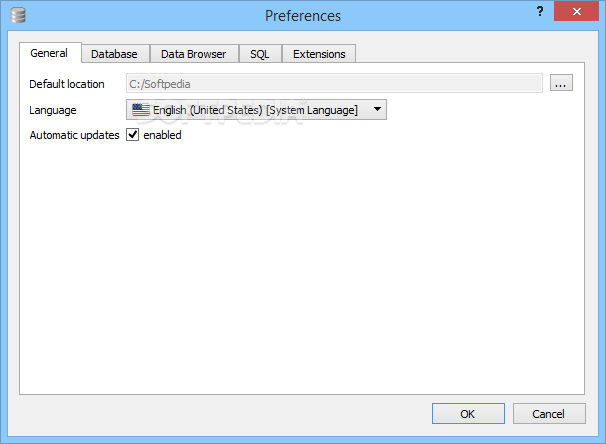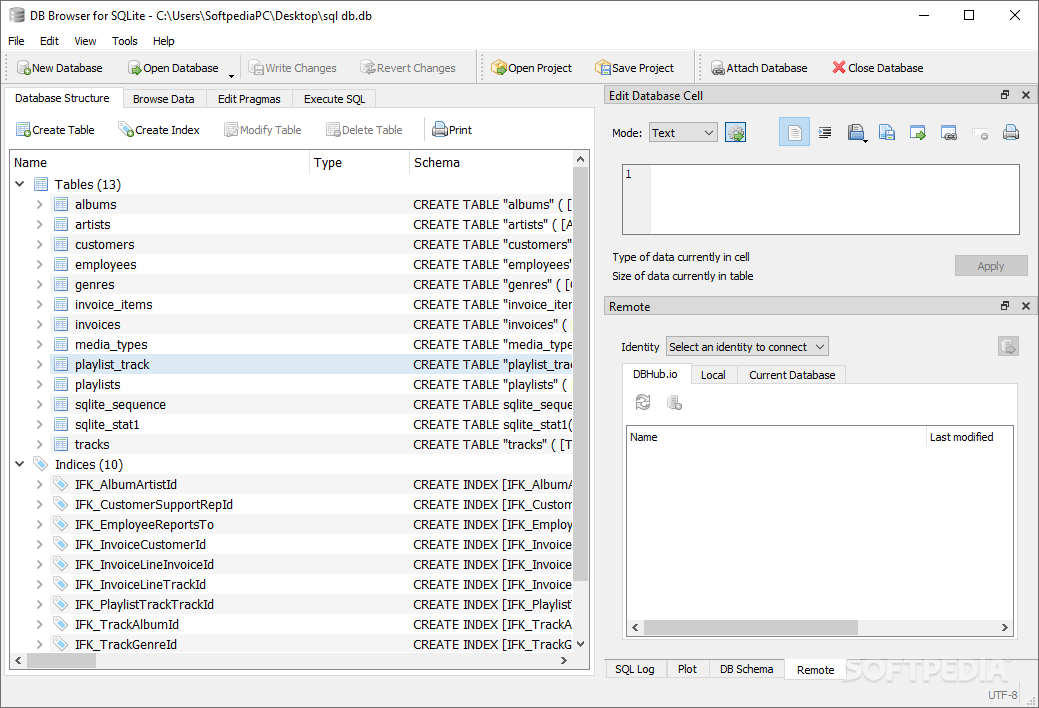
- #Portable version of the db browser for sqlite how to#
- #Portable version of the db browser for sqlite portable#
The statement above is called CREATE STATEMENT, and we use it to create a table. Then type the SQL statement below in the pane. Now we need to create a table on which we shall perform our CRUD. But since we want to use SQL, you can go ahead and close the popover. Once you have created your database, a popover ( Edit table definition) will surface which directs you to create your first table. And for this case our database is yukusite_article.db3. Since we want SQLite3 I recommend you either use. Note that the SQLite database has 3 file extensions available to us and these include. You can save the new database anywhere you want. To do that, click on (located on the top menu) ,then on in the dropdown menu. You should be able to see the interface like the one shown in the figure above. Creating a databaseĪfter having installed the Db browser, you can go ahead and open it.
#Portable version of the db browser for sqlite how to#
This article is not really about learning how to install the software in Windows, macOS or Linux machine, so the assumption I am making here is that you already know how to install the software in your particular machine.
#Portable version of the db browser for sqlite portable#
I recommend for Windows users to download the portable version. You can download the Db browser from here. So let’s go ahead and download and install the Db browser. We need the Db browser to be able to run our SQL statements, as well as visualizing our data. Need a quick edit on the go? Download TablePlus for iOS.Preliminaries and environment set up.


Not on Mac? Download TablePlus for Windows. Need a good GUI Client to work with PostgreSQL or SQLite? TablePlus is a modern, native GUI that allows you to simultaneously manage multiple databases such as MySQL, PostgreSQL, SQLite, Microsoft SQL Server… faster and easier. PostgreSQL gives you the functionality to maintain such a complex database smoothly without limitations.

PostgreSQL: The world’s most advanced open source database.SQLite: Ultra-lightweight in setup, administration, and required resource.They are both open-source and free, but they have some major differences that should be considered when choosing a database to use for your business. SQLite and PostgreSQL are among the most widely used relational database management systems (RDMS).


 0 kommentar(er)
0 kommentar(er)
